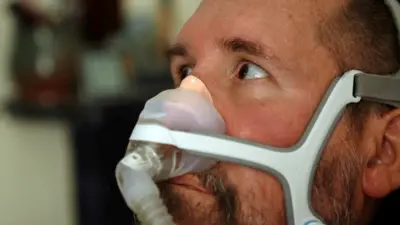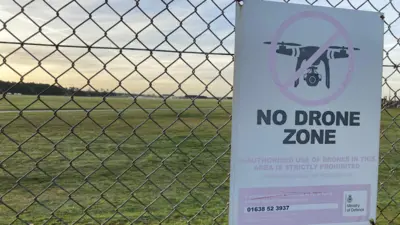We've updated our Privacy and Cookies Policy
We've made some important changes to our Privacy and Cookies Policy and we want you to know what this means for you and your data.
Ian Tomlinson death: PC cleared
- Author, Dominic Casciani
- Role, ≥…»ňŅž ÷ affairs correspondent
Ian Tomlinson's final hours on 1 April 2009 were spent in bewilderment. He didn't care about the G20 protests. He just wanted to get to his bed.
Top Stories
But the 47-year-old never reached it after he collapsed following a strike and push from PC Simon Harwood. Three years on, a jury at Southwark Crown Court has concluded the officer's actions were not criminal and he has been found not guilty of manslaughter.
The trial, a major moment in the history of modern British policing, would never have happened if an eyewitness had not filmed the incident - footage that ultimately convinced three pathologists that Ian Tomlinson had not died of natural causes, despite a first post-mortem finding nothing suspicious.
The Crown Prosecution Service had initially ruled out prosecuting the officer because of these conflicting post-mortem reports. But that decision was reversed because of the medical evidence presented at the inquest and its verdict of unlawful killing.
PC Harwood was a member of the Metropolitan Police's Territorial Support Group (TSG), the unit that takes on some of the capital's hardest policing jobs. His job during the two days of protests was to look after his particular unit's van and monitor radios.
Top Stories
Mark Dennis QC, prosecuting, said the officer left that post after being humiliated by a man who wrote anti-police graffiti on another unit's van. The vandal evaded Pc Harwood's attempt to arrest him. Left holding the graffiti man's coat and facing a jeering crowd, the officer was accused of losing control. The jury was told his "blood was up".
But during his evidence, PC Harwood told the jury how scared he was at the time. There were hundreds of protesters, some of them he believed were rioting. Exposed and alone on the street, he said he rushed to join other officers to find safety in numbers.
Officer in fear
Describing the crowds, PC Harwood said: "They seemed to be goading me and shouting at me, pointing their fingers at me. To me it was as if everyone was out for me because of what I had done trying to arrest the graffiti man."
Top Stories
The encounter with Ian Tomlinson came minutes later in a small alley called Royal Exchange Buildings. Ian Tomlinson tried to walk up it to find his way home through the cordons.
But PC Harwood told the court he believed Mr Tomlinson was being obstructive. He said he turned to reasonable force to make Mr Tomlinson move: a baton strike to the leg, followed by a firm push.
Mr Tomlinson had his hands in his pockets as he fell forward and he could not properly break his fall. He was an alcoholic in very poor health and suffered massive internal bleeding. He collapsed minutes later.
'Strike first mentality'
Mark Dennis QC, prosecuting, asked if he had a "strike first, ask questions later" mentality - and that his push amounted to a criminal use of force.
But the officer said he was sorry he had ever got involved with Mr Tomlinson.
He said: "Now I've seen all the evidence and I know how poorly Mr Tomlinson was, I'm sorry that I got involved, I shouldn't have hit him with a baton and pushed him."
This question of Mr Tomlinson's health was a critical element in the case. Although the medical experts, other than the first pathologist, agreed Mr Tomlinson had suffered internal bleeding, there were differences of opinion as to the precise relationship between that and his death.
Two of the pathologists linked the bleed directly to the fall, caused by the push. But one expert questioned whether the bleed could have so quickly caused death. Patrick Gibbs QC, for PC Harwood, told the jury that it simply was not clear how Mr Tomlinson died.
During the inquest into Ian Tomlinson's death, lawyers for his family argued that PC Harwood's employment record should form part of the hearing. The coroner disagreed, saying that it would prejudice the hearing. The record was also kept from the jury at the manslaughter trial.
In 2000, five years after he joined the Met, PC Harwood was involved in what was described at the inquest as a "road rage" incident. He was off-duty at the time and the other driver complained of unlawful arrest and abuse of authority.
PC Harwood denied the accusation but the Met wanted him to face a disciplinary hearing. However, the following year he retired on medical grounds before it took place. As a result, there was never a finding. An earlier and separate allegation of assault against the officer also went unsubstantiated.
Three days after his medical retirement, he became a civilian member of police staff in Croydon. Then, in 2003, he successfully reapplied to become a constable with Surrey.
While he was at Surrey, there was a further unsubstantiated complaint that he had used excessive force in a raid, allegedly punching a man twice in the face.
In late 2004, PC Harwood rejoined the Metropolitan Police. Scotland Yard's vetting unit had considered the road rage incident but the coroner was told it had not reviewed the full file.
The coroner heard that PC Harwood had been the subject of seven more complaints following rejoining the Met, three of which were against him alone. Two were allegations of improper force.
The third complaint was of improper use of the Police National Computer to check up on a driver involved in an accident with his wife. Ian Tomlinson's coroner was told that the officer had received a written warning. In all, PC Harwood was the subject of 10 complaints over 12 years, but only the PNC incident was found against him.
A spokesman for Surrey Police told the ≥…»ňŅž ÷ that when PC Harwood asked to join the force, the Met told it that there had been a "previous misconduct investigation" but no further action had been taken.
The Met Police said in a statement following PC Harwood's trial that it was clear that "insufficient recording and checks meant that detailed information regarding the officer's misconduct history was not shared at key points".
"We got that wrong," it said in a statement, adding there had since been "huge changes" to its vetting system.
Top Stories
More to explore
Most read
Content is not available








